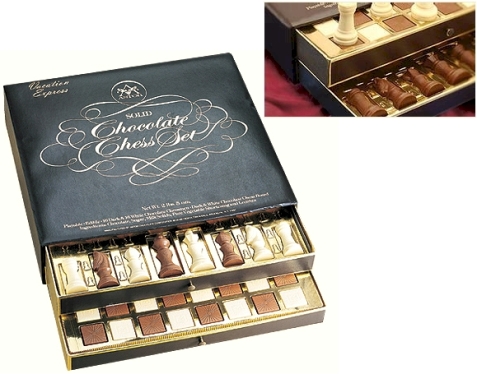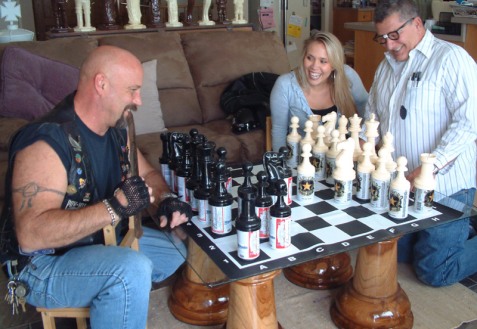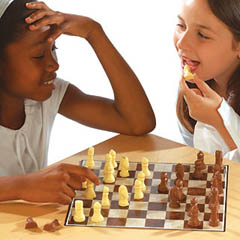“Chess is war on a board. The object is to crush the other man’s mind” Bobby Fischer
The Corus tournament in Wijk Aan Zee – the strongest chess tournament in the world – featured an example of Fischer’s dictim on Sunday. In the B Group, Nigel Short (ex-world championship contender and British number 2) was playing Ivan Cheparinov (gifted Bulgarian number 2, and team mate to Topalov, ex-world champion). This was always going to be a tetchy affair because of remarks Short made about Topalov and his manager Danailov during the infamous “Toiletgate” affair last year. Without going into the intricate details, there was clearly bad blood between Short and the Topalov-Danailov-Cheparinov team.
Short offered his hand to his opponent before the game – a normal social courtesy. Cheparinov refused to shake his hand. Short offered a second time. Again, it was pointedly refused. There’s a fascinating video of it here. Knowing Danailov’s calculated shiftiness and previous bully-boy tactics, this was probably a pre-arranged way to insult Short.
But Short then spoke to the arbiter and demanded an immediate forfeit for Cheparinov. Apparently, a new rule was issued by Fide governing such cases: players refusing to shake an opponent’s hand before a game suffer an immediate forfeit of the game.
The infamous ruling is called Behavioral norms of players in chess events. The significant part of the ruling states:
Any player who does not shake hands with the opponent (or greets the opponent in a normal social manner in accordance with the conventional rules of their society) before the game starts in a FIDE tournament or during a FIDE match (and does not do it after being asked to do so by the arbiter) or deliberately insults his/her opponent or the officials of the event, will immediately and finally lose the relevant game.
The arbiter checked the rules (he apparently had never heard of it until Short informed him!) and then immediately told Cheparinov that he was awarding the game to Short. However, the legal eyes among you will spot the weakness of his decision. He forgot the clause “and does not do it after being asked to do so by the arbiter”. He hadn’t asked Cheparinov to shake Short’s hand. Hence, Danailov lodged an appeal which stated that had the arbiter asked Cheparinov to shake Short’s hand, then he would have complied. Faced with a legalistic loop-hole, the appeals committee (ironically featuring Kramnik, the previous brunt of Danailov’s tricks) overruled the original decision and forced a replay of the game on the following day.
Short won. 1-0 for common sense and a victory for polite behaviour over the bullies! As Short said, their first game was memorable, but their second game was great.
Ironically, the very next day (Tuesday), Kramnik was playing Topalov in the A Group. The two players studiously avoided shaking hands. All observers were agreed that this was not a breech of the rules, apparently because no one refused the offer of a handshake because no one offered one!
However, the ruling states nothing about refusing to shake an offered hand. It simply states: “Any player who does not shake hands with the opponent …before the game starts in a FIDE tournament…will immediately and finally lose the relevant game”. According to that logic, both players forfeit the game. The score should be 0-0.
My argument would be that both players were issuing insults to each other. It doesn’t matter that it was mutual. It matters that it was calculated and insulting. In what sense does a double-refusal seem less than a single refusal? It’s like that old one about two negatives not making a positive. (I am reminded of Woody Allen’s joke that because he had nothing positive to say he would just state two negatives…).
Fide should have thought through the implications of their ruling before issuing it. And they should have explicitly stated that two players refusing to shake hands should both be forfeited. Yesterday was a chance to set an example and clarify the social norms expected once and for all.









